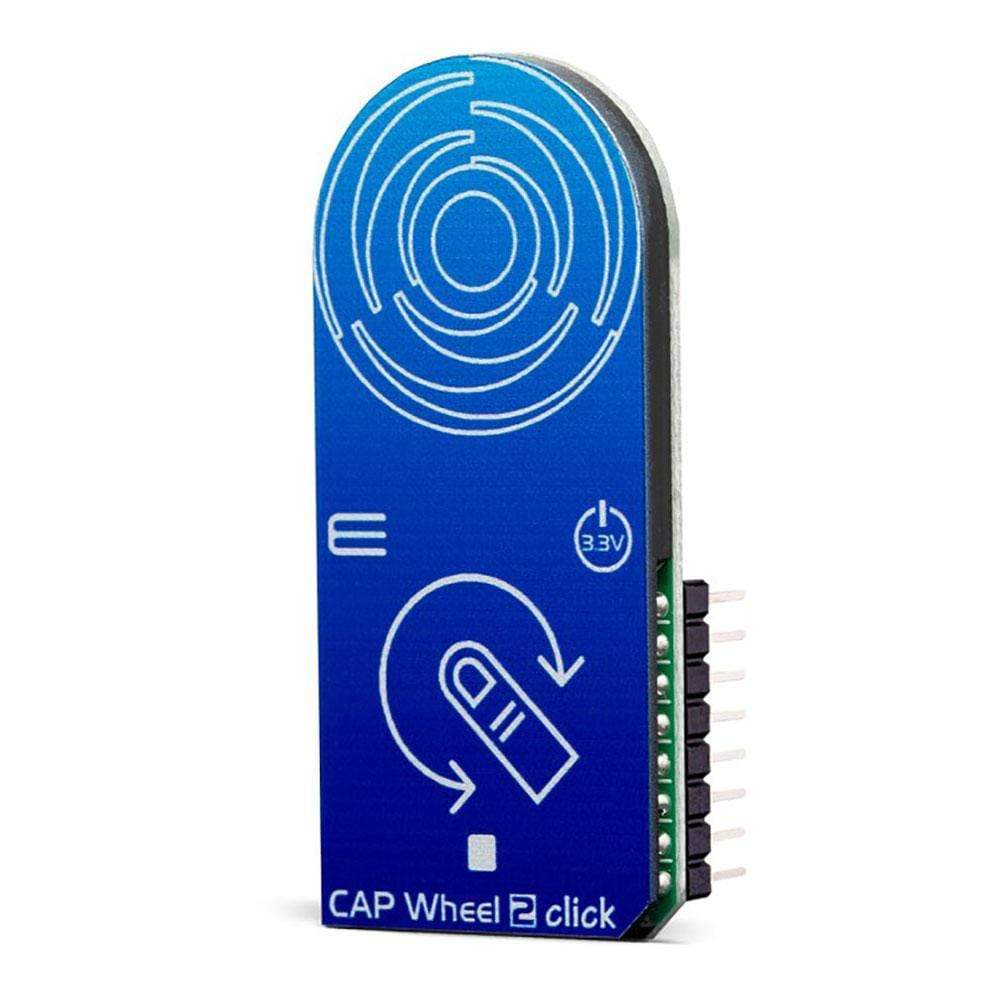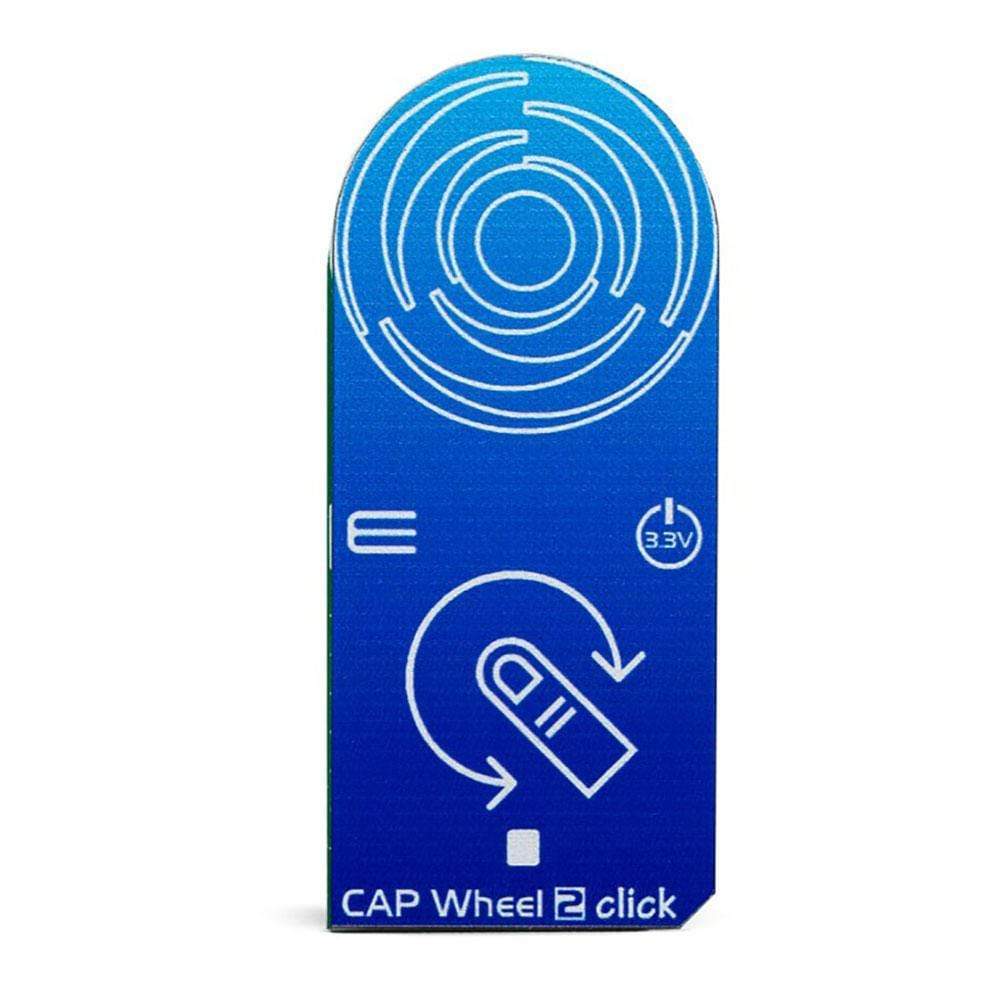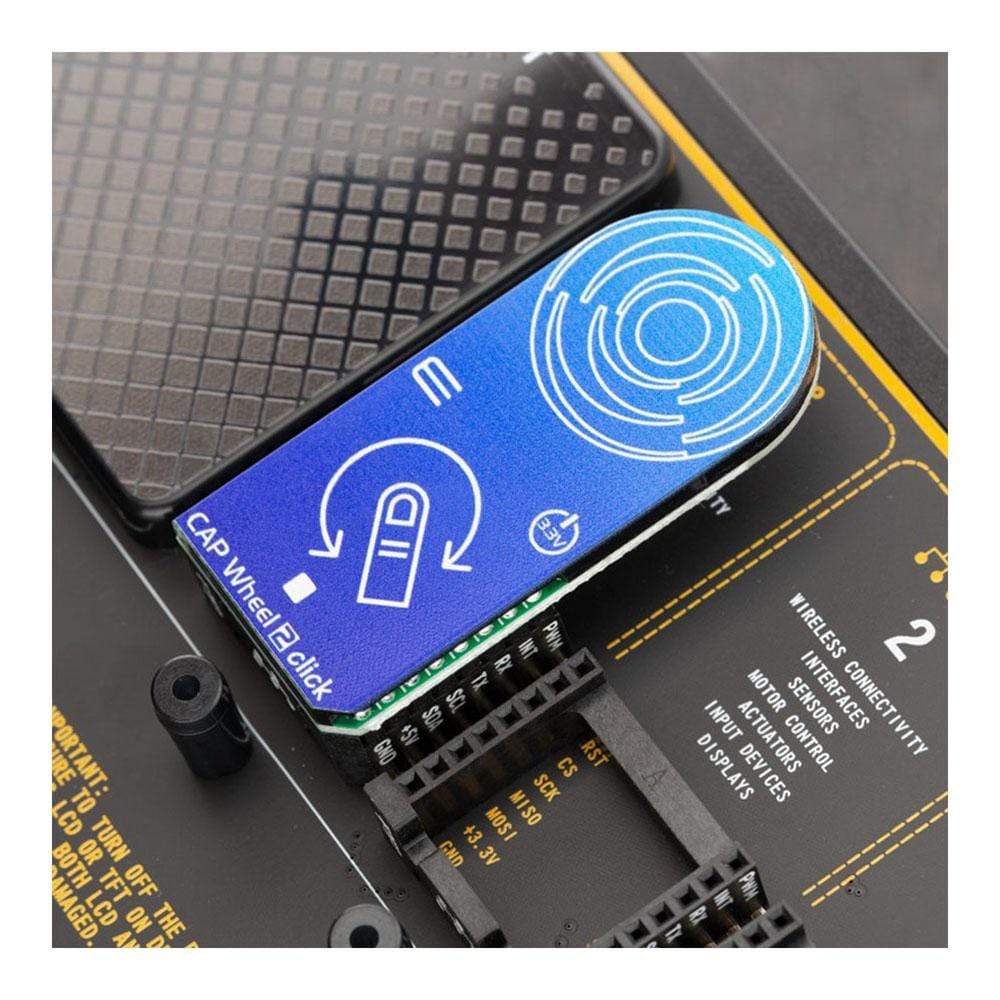



Overview
The Cap Wheel 2 Click Board™ is a capacitive touch sensor with round-shaped electrodes integrated on a Click Board™. This Click Board™ can sense touch even through plastic, wood, or other dielectric materials, which can be used to protect the surface of the PCB and the sensor pad trace itself. Therefore, this Click Board™ comes with an overlay, made of plexiglass.
Unlike the mechanical button, the capacitive touch button lasts much longer, it is not prone to damage and wears over time and it is very reliable. The Cap Wheel 2 Click Board™ features a QS263B sensor which contains a ProxSense® module that uses patented technology to provide detection of proximity and touch conditions on numerous sensing lines.
Downloads
Le Cap Wheel 2 Click Board™ est un capteur tactile capacitif avec des électrodes de forme ronde intégrées sur un Click Board™. Ce Click Board™ peut détecter le toucher même à travers le plastique, le bois ou d'autres matériaux diélectriques, qui peuvent être utilisés pour protéger la surface du PCB et la piste du capteur lui-même. Par conséquent, ce Click Board™ est livré avec un revêtement en plexiglas.
Contrairement au bouton mécanique, le bouton tactile capacitif dure beaucoup plus longtemps, il n'est pas sujet aux dommages et à l'usure au fil du temps et il est très fiable. Le Cap Wheel 2 Click Board™ est doté d'un capteur QS263B qui contient un module ProxSense® qui utilise une technologie brevetée pour fournir une détection de proximité et des conditions tactiles sur de nombreuses lignes de détection.
| General Information | |
|---|---|
Part Number (SKU) |
MIKROE-3677
|
Manufacturer |
|
| Physical and Mechanical | |
Weight |
0.023 kg
|
| Other | |
Country of Origin |
|
HS Code Customs Tariff code
|
|
EAN |
8606018716524
|
Warranty |
|
Frequently Asked Questions
Have a Question?
Be the first to ask a question about this.




